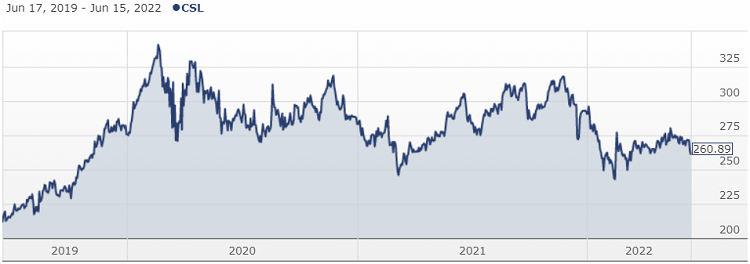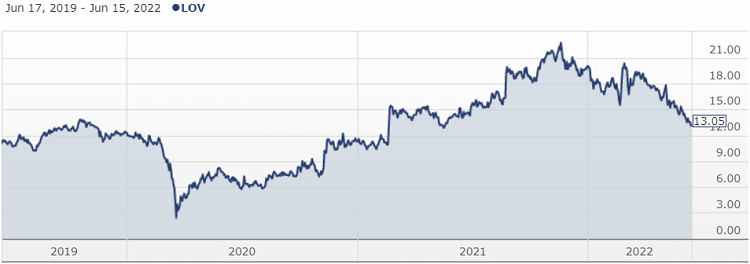After the turmoil of recent years, many had hoped that 2022 would see a return to a more normal environment. However, the year has been punctuated by macro events such as the crisis in Ukraine, and the Fed’s tightening cycle in the US is impacting equity markets globally.
As this uncertainty continues, it is more important than ever that investors have a sound investment process. It is vital not to get caught up in the hype and noise of the daily market movements, and instead invest with a long-term approach. To help with this, it may be useful to have some guidelines to fall back on when the market noise gets too loud.
Companies that have a sustainable competitive advantage will be better placed to withstand short-term headwinds, maintain market share, and ultimately find new ways to grow.
It can however be difficult to recognise this potential in companies, particularly those that are in the growth stage of their life cycle. And while challenging, it is also important to balance both the narrative and the numbers.
By drilling down into a company’s financials and growth plans, it is possible to identify the quality growth stocks that will prosper over the long-term. The best way to explain how this process works is through a couple of examples.
CSL’s M&A activity
CSL is a multinational biotechnology company that operates in both plasma and influenza markets. It was founded in 1916 and listed on the ASX in 1994.
Throughout its history, it has been able to create a competitive advantage in the areas it operates in through acquisition and combining product portfolios, manufacturing, and distribution to boost the value of the acquired companies.
It has a good historical track record of efficiently deploying capital in attractive growth areas. For example, its acquisition of Aventis Behring, the second largest plasma player, in 2004 has proved to be transformative over the past 18 years. This acquisition enabled CSL to more than double the products produced per litre of plasma from two to five, as it added haemophilia and speciality products. This is now a key source of CSL’s competitive advantage in this area.
For an acquisition cost of $US925 million in 2004, the Behring division now generates US$8.5 billion in sales and US$3.1 billion in earnings before interest, taxes, depreciation, and amortisation (EBITDA).
CSL clearly has what we call a Dynamic Capability - a change-oriented capability that helps a firm redeploy and reconfigure their resource base to meet evolving customer demands and competitor strategies.
CSL has recently entered the renal and iron deficiency market with the acquisition of Vifor Pharma. The market is focussing on the delayed recovery in plasma collections, donation inflation and a US$5 billion capital raising, and has sold down CSL accordingly. However, we believe that CSL will be able to apply the earlier lessons learned via its acquisitions in the plasma and influenza markets to the Vifor acquisition and potentially dominate the renal market as well.

Source: Morningstar
Lovisa’s growth path
Lovisa Holdings is a fast fashion vertically integrated affordable fashion jewellery retailer. It aspires to be a global player and already has more than 70% of its stores operating overseas.
A combination of a clear specialisation in affordable jewellery, vertical integration which enables frequent inventory turnover and speed to market, and negotiating leverage due to scale and capable leadership, makes for a competitive business model.
In addition, Lovisa has a clear top-down focus on data. Stock placement is based on a design created by head office each week, using the prior week’s sales data. This universal approach to product placement generates maximum sales from Lovisa’s wall space.
Because of this focussed approach, Lovisa also has a short payback period for domestic stores of approximately eight months, with new store fitouts taking only 14 days on average.
While Lovisa’s founding CEO Shane Fallscheer retired last year, Inditex Group veteran Victor Herrero became CEO in December. Herrero’s experience managing global expansion at Inditex Group, which owns Zara, Pull & Bear and Massimo Dutti, will be advantageous to Lovisa’s global growth plans.
Lovisa’s proven and astute business strategy, combined with superior management, make it a Quality Franchise that presents a long-term opportunity for investors.

Source: Morningstar
Common ground
While CSL and Lovisa seem, at face value, to be very different companies, they have key characteristics in common. Both have the ability to assess market needs quickly and adjust their offering rapidly to meet changing demand or requirements. They have also successfully expanded into global markets with little impact on the effective management of the business.
The ability to be flexible, to move quickly to take advantage of opportunities as they arise, and capitalise on market trends and demand, will continue to support the ongoing success of such businesses, and provide significant long-term opportunities for their investors.
Dr Manny Pohl is Founder and Chairman of ECP Asset Management. This material has been prepared for informational purposes only and is not intended to provide and should not be relied on for financial advice.